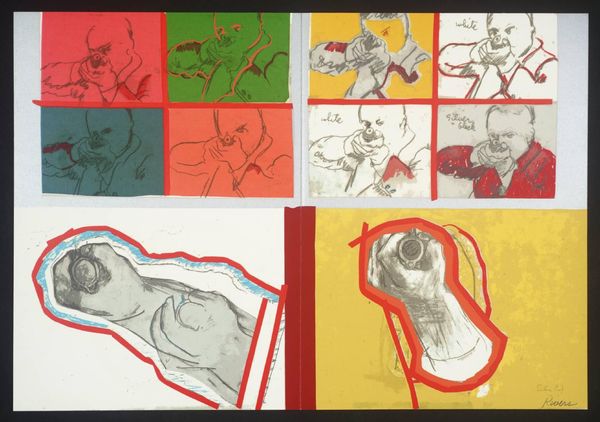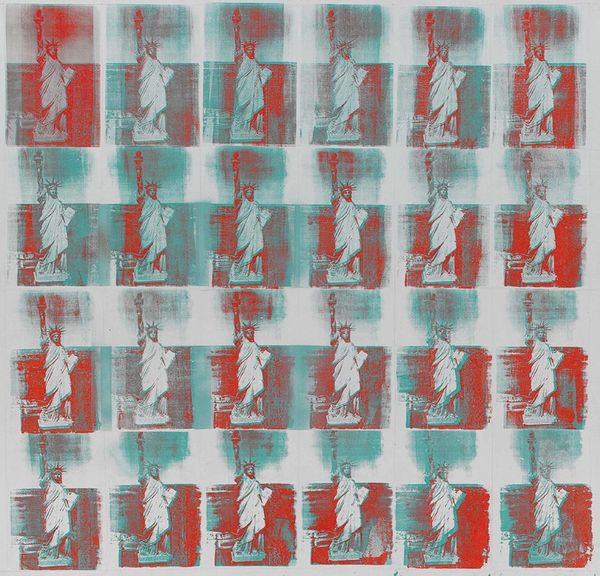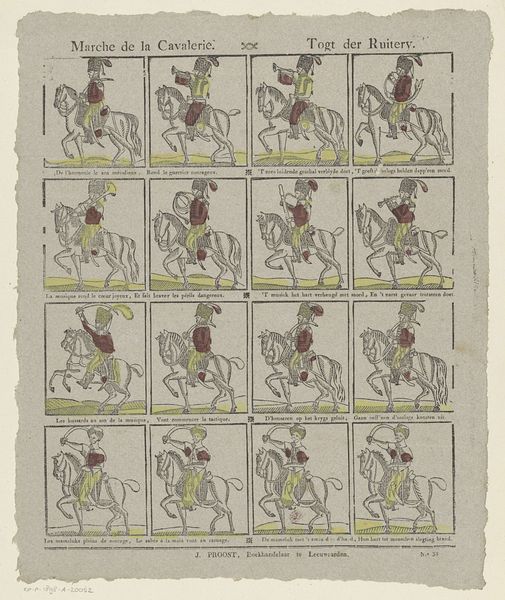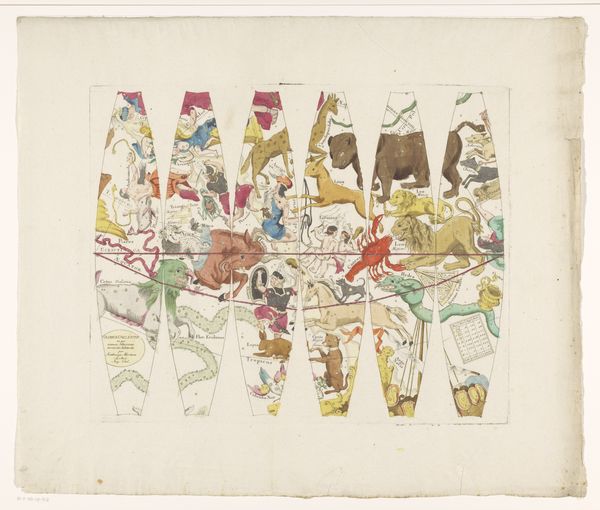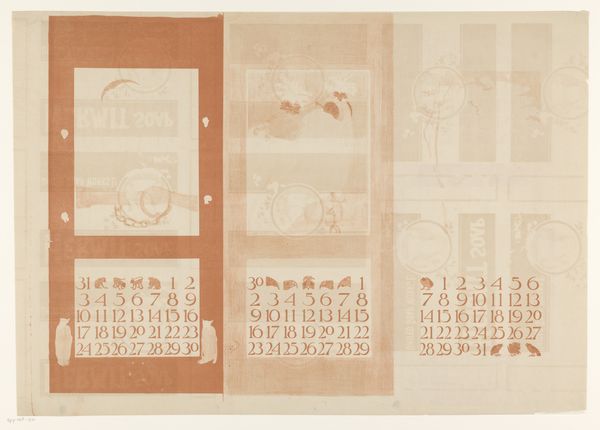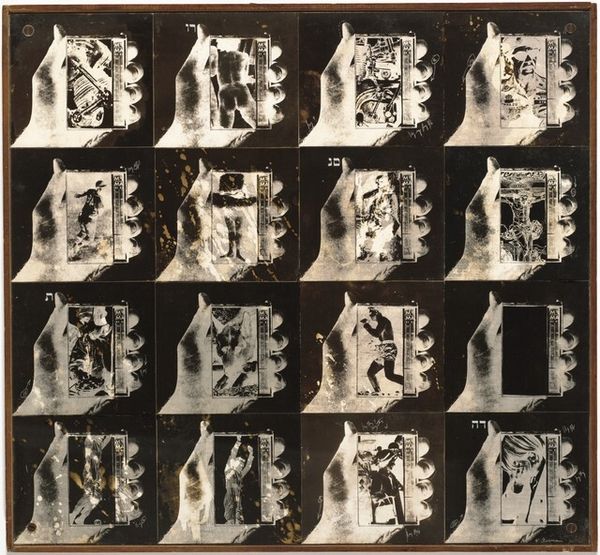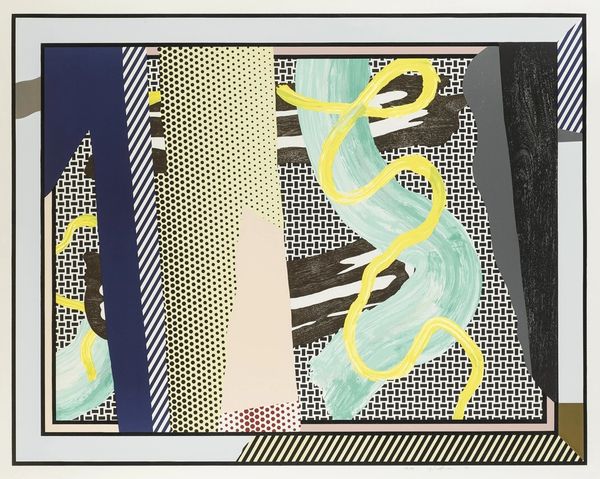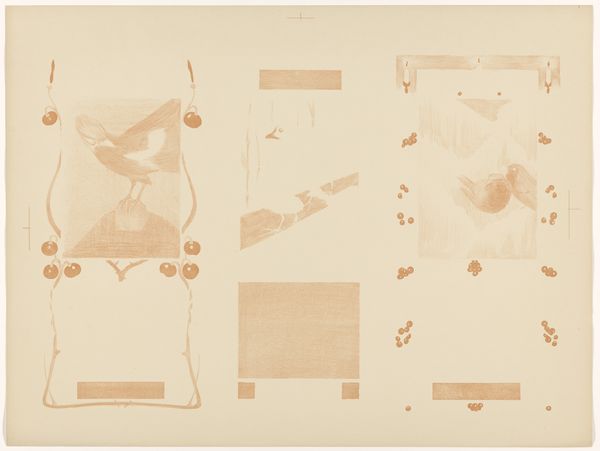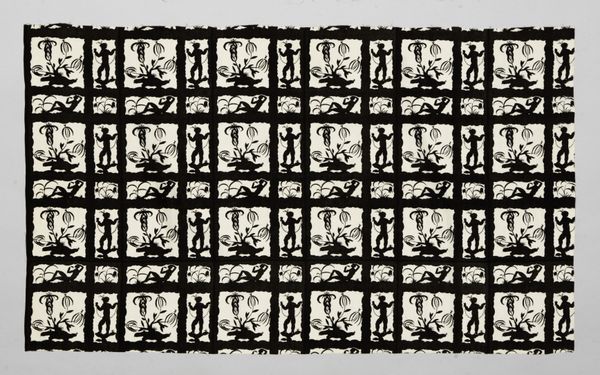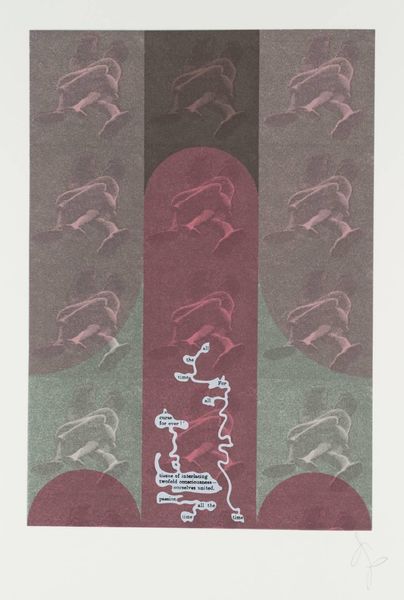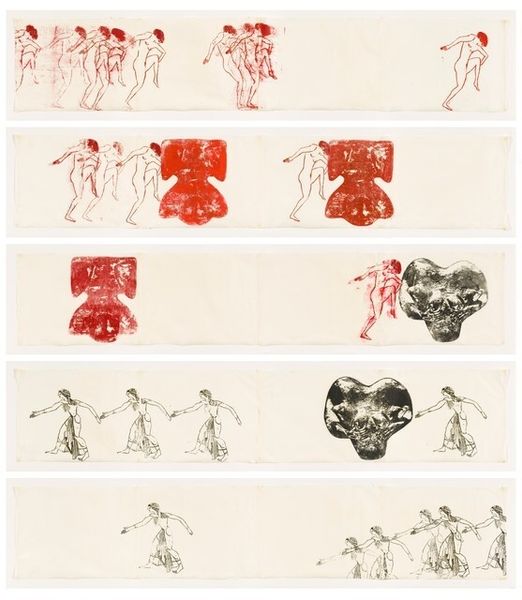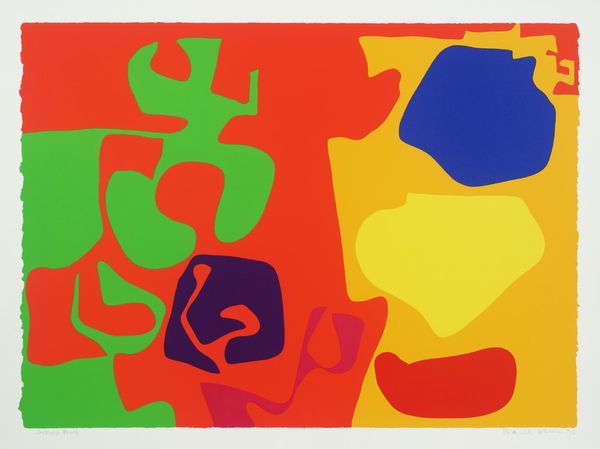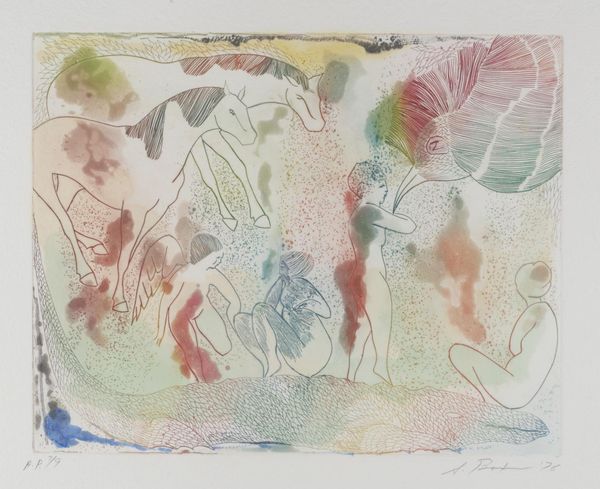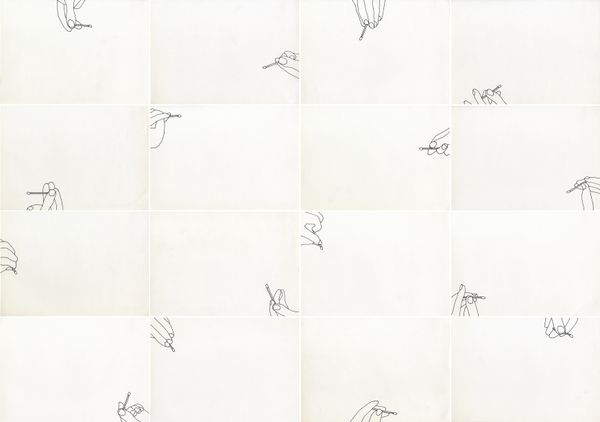
collage, print, serial-art
#
collage
# print
#
collage layering style
#
figuration
#
serial-art
#
pop-art
#
nude
Dimensions: height 570 mm, width 765 mm
Copyright: Rijks Museum: Open Domain
Curator: Here we have Aat Verhoog’s "Twee naakten (twaalf keer)", or "Two Nudes (Twelve Times)", a collage and print from around 1966, now held here at the Rijksmuseum. The arrangement in a grid gives it a serial feel, and that, coupled with the bold colours, suggests some Pop Art influences. What's your immediate reaction? Editor: There's something clinical, almost dissecting, in the way the figures are presented in a grid like that. But I'm also drawn to the materials— the contrast between the graphic print and the more tactile collage elements. The grey collage strips look like tape, temporarily holding together a work in progress. Curator: Exactly! The fragmented figures speak to broader cultural anxieties around the representation of women and the objectification of the female form, particularly within the male gaze. Each nude is a variation of the same pose, yet the slight differences and colour alterations create a sense of unease. Editor: And notice how the red, yellow, and even the black panels seem mechanically reproduced, underscoring a production line quality, yet there are handmade, collage details. Where did Verhoog source the material from? I want to understand its production context. Were they stock images he bought? Were they commissioned shots? What was the labour and expense of producing the piece, and how does that shape our viewing experience? Curator: These are crucial questions. I feel they emphasize a feminist lens. How do mass production techniques, alongside manual adjustments and alterations, contribute to or challenge the standardization and commodification of female bodies? Editor: And who is Verhoog attempting to connect with here? To me, it's all about this fascinating push-pull relationship that reflects the labor processes and also the artistic decision-making behind the piece. The means of making, that push-pull relationship is right at the heart of the collage. Curator: Considering our discussions, what lingers with you most profoundly now? Editor: I keep thinking about the process. Verhoog challenges what's high or low, manufactured or crafted. I think it's so key to how it comes to signify a certain historical moment. Curator: For me, it’s how the repetitive yet fragmented nature mirrors our understanding of identity, challenging us to question societal constructs that we sometimes deem immutable.
Comments
No comments
Be the first to comment and join the conversation on the ultimate creative platform.
